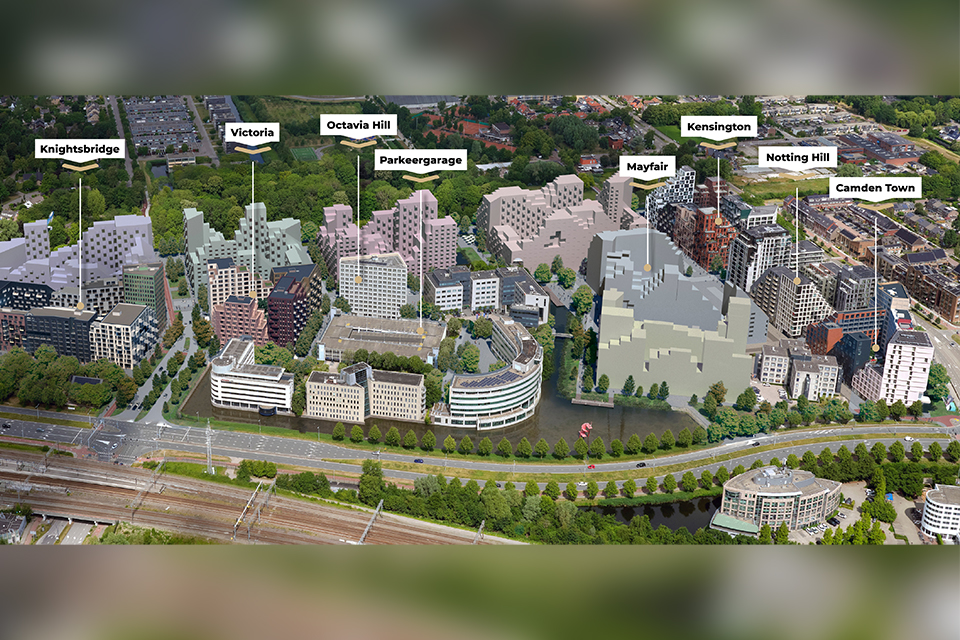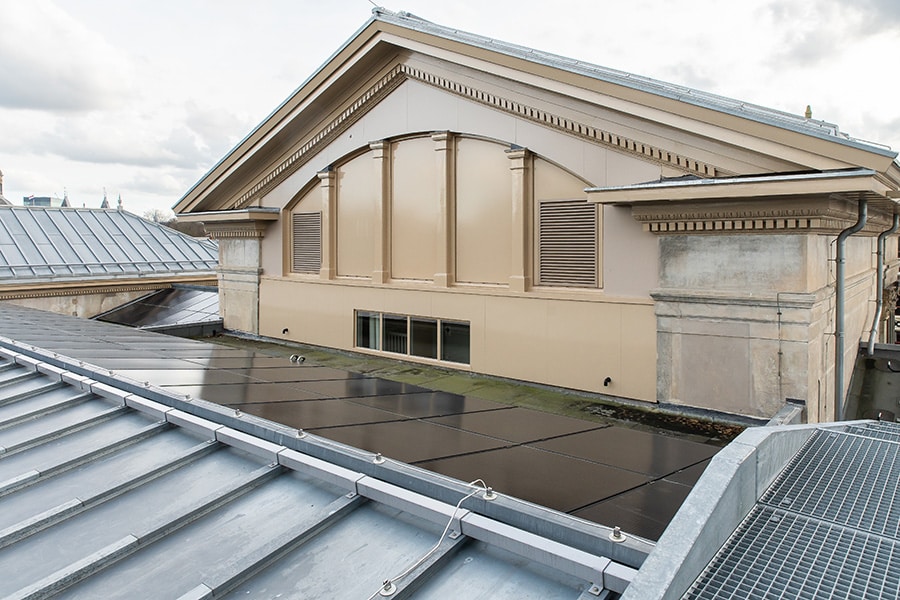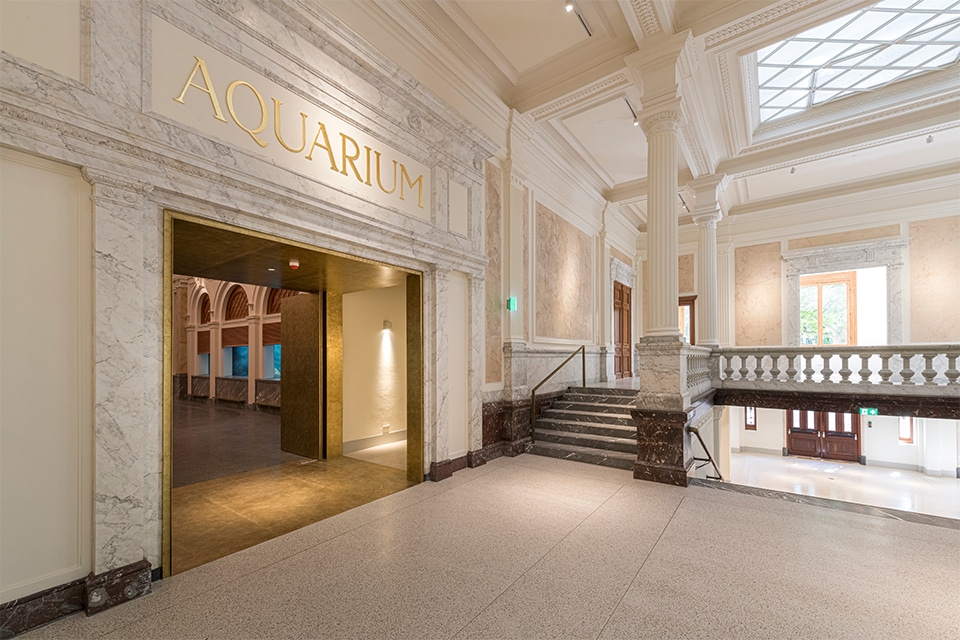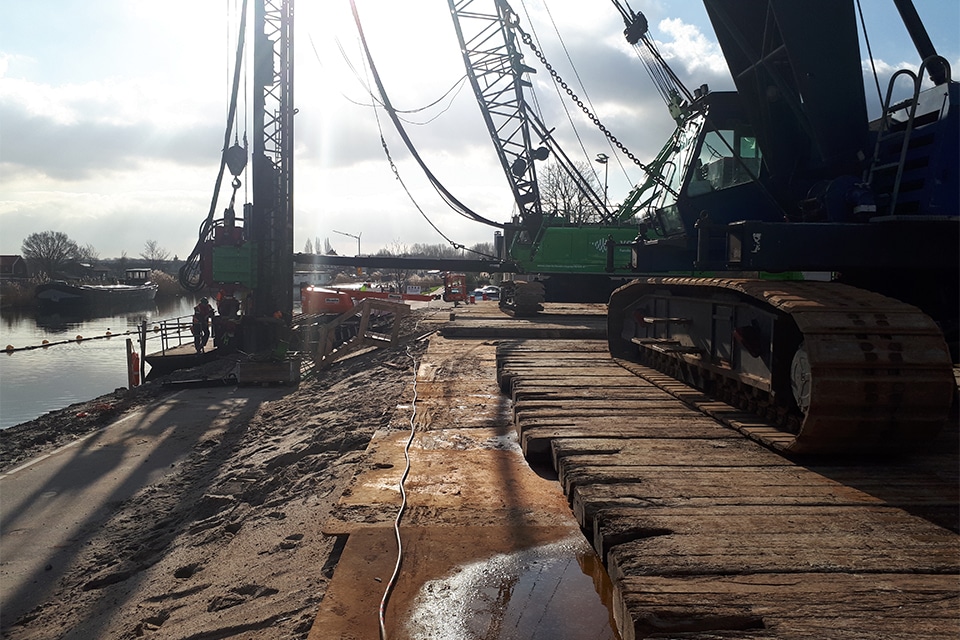
Geotechnical risk analysis as basis for special high-rise project
Location next to and under railroad viaduct requires extensive deformation test
With a task of over 30,000 m2, Crossroads answers the ever-faster growing demand for good, sustainable and affordable housing in Amsterdam. The impressive residential building stands out because of its striking towers of 88 and 44 meters, yet the project location is most special. Crossroads is being built at the intersection of roads, train tracks and streams of people. The precarious location directly next to and under the railroad viaduct requires a thorough analysis of the environmental impact. Therefore, CRUX Engineering B.V. has drawn up an extensive deformation and risk analysis.
CRUX is an independent consulting firm providing high quality advice in the fields of geotechnical engineering, geohydrology, soil (energy) and environmental engineering. The company has been involved with Crossroads as a geotechnical consultant since mid-2018. "We are responsible for the geotechnical design of the building foundation and associated earth retaining structures," says Auke Balder, Senior Specialist and Partner at CRUX. "Think of the building pit with sheet pile walls, which made it possible to realize Crossroads right next to the existing station and ProRail's fly-over."
Deformation calculations
An important project condition was that the existing foundation of the flyover had to remain untouched, Balder says. "The existing foundation was absolutely not allowed to deform. Because Crossroads is a relatively tall building, we used 3D EEM deformation calculations in advance to map the influence of the work and building loads on the foundation of the railroad flyover. In addition, we inventoried the influence of soil removal and groundwater lowering. Both soil and water were contained using steel sheet pile walls placed along the existing building and in the embankment along Radar Road. Because the sheet pile walls do not stay up on their own, they were stamped on the inside with steel pipes. Where stamping was not possible, the sheet piles were anchored with grout anchors. All of our findings were checked against the applicable ProRail guidelines. Based on the calculation results, it could be shown that the impact on the track and the station building remains minor and acceptable."
Monitoring Plan
To monitor the environmental impact during construction, CRUX created a monitoring plan, which is aligned with the deformation and risk analysis. "For the monitoring of project Crossroads, a robotic total station is used, which takes measurements 24 hours a day at the flyover and the station building," Balder said. "If alarm and limit values are reached, the contractor receives immediate notification so that appropriate actions can be initiated if necessary."
No vibrations
On the advice of CRUX, vibration-free systems were used, preventing vibration damage to the flyover and buildings. The sheet pile walls were pressed and the piles screwed. "Based on our calculations, chief structural engineer Van Rossum Raadgevende Ingenieurs worked out the pile plan, carefully matching the positioning of the piles to the existing pile foundation (brace piles) of the fly-over." Also special is the WKO installation, says Balder. "At an early project stage, we advised on the influence of the realization of this system on the new foundation and surroundings."
During execution, CRUX remained involved as a Boele & van Eesteren consultant on call to assess measurements and deviations, monitor the plan and prevent damage. In combination with the striking appearance, Crossroads forms a nice new business card in the impressive portfolio of the Amsterdam geotechnical consultancy firm.




